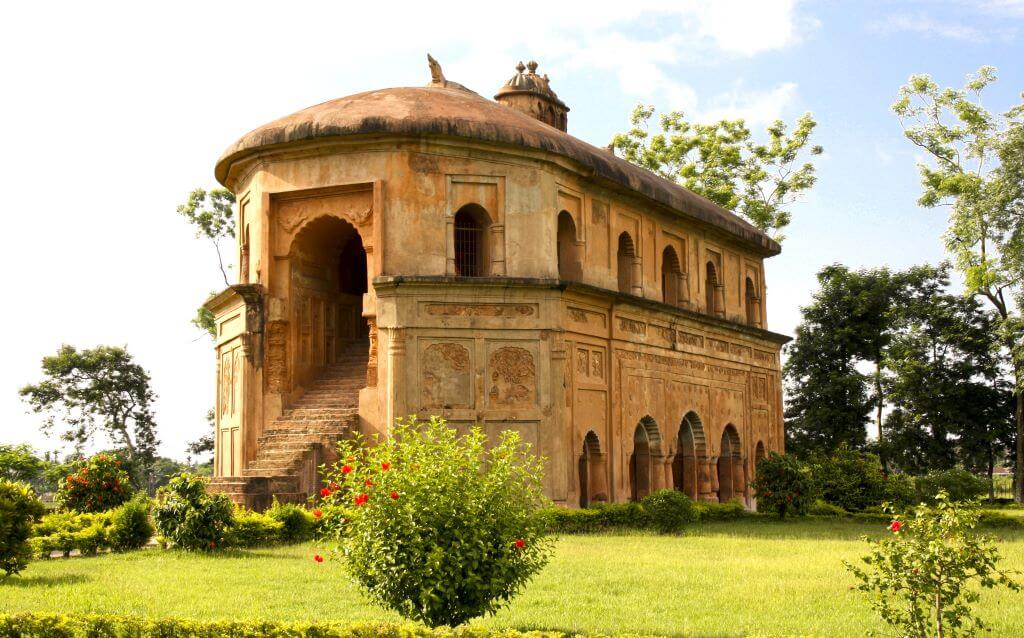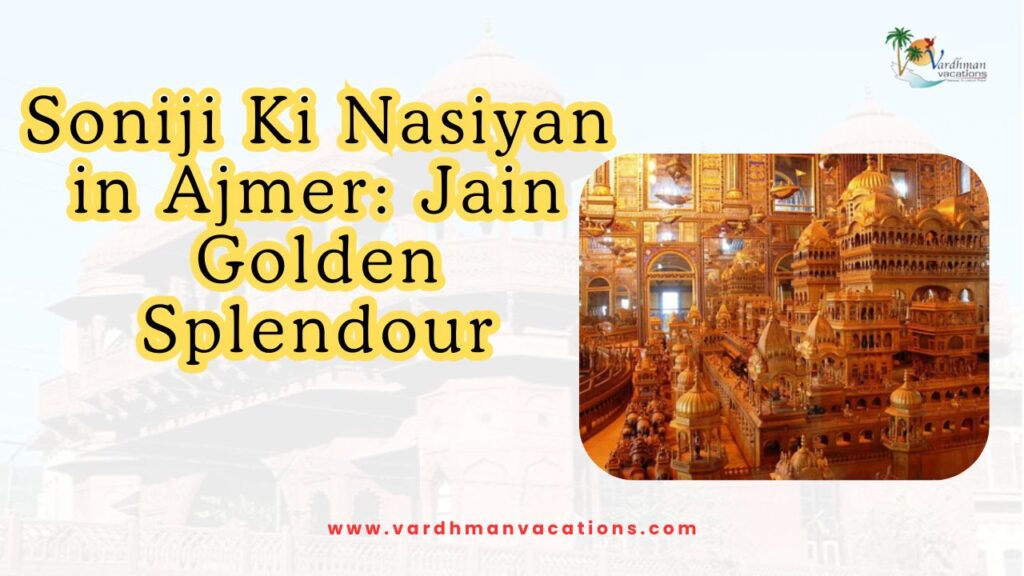Assam is celebrated for its natural beauty, diverse wildlife, serene waterfalls, and vibrant culture. But beyond these, the state also holds a fascinating history that dates back to the 10th century—a side many travellers often overlook. To help you uncover this hidden heritage, we’ve curated a list of the most remarkable historical places in Assam, perfect for history enthusiasts and curious explorers alike. From ancient temples and majestic forts to royal palaces, these monuments narrate tales of Assam’s glorious past. So, when you plan your trip to Northeast India, make sure to add these heritage gems to your itinerary and witness the brilliance of Assam’s architecture and history.
List of Historical Places in Assam
Here’s a list of famous historical places in Assam you can include:
Rang Ghar
Location: 3 km from Sibsagar, Assam
Timings: 9:00 AM – 5:00 PM
Entry Fee: INR 5 per person
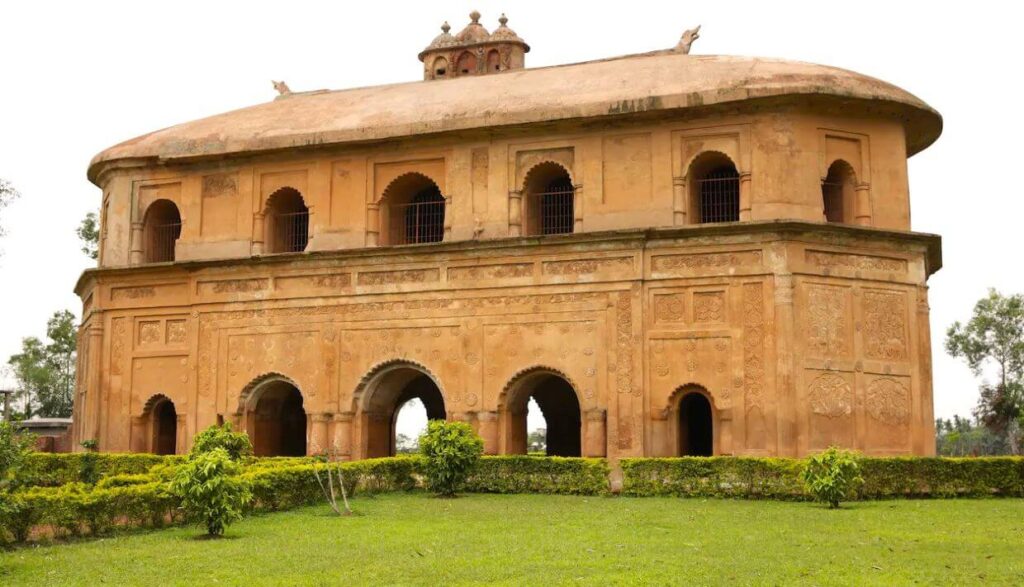
Often hailed as the ‘Colosseum of the East’, Rang Ghar is one of the oldest surviving amphitheatres in Asia and a must-visit historical landmark in Sivasagar, Assam. The name Rang Ghar translates to “House of Entertainment,” and true to its name, it once served as a royal sports pavilion for the Ahom kings, especially during the vibrant Rongali Bihu celebrations. Built in 1746 AD, this two-storied structure is a fine example of Ahom architecture, reflecting both grandeur and precision.
The monument holds immense historical significance, so much so that in 2007, it was chosen as the logo of the 33rd National Games hosted in Assam. However, due to frequent earthquakes in the region, the structure has suffered damage, with around 35 visible cracks marring its walls. Despite this, its majestic presence and cultural importance continue to draw history lovers and curious travellers alike.
How to Reach Rang Ghar
Sibsagar is well-connected by road and rail. Regular buses ply from major cities in Assam to Sibsagar. The town also has its own railway station, making it convenient for visitors. From Sibsagar, taxis and auto-rickshaws are readily available to take you to Rang Ghar.
Hajo Powa Mecca
Location: No.1 Bhelkar, Assam
Timings: Open all day
Entry Fee: Free

Hajo Powa Mecca is one of the most revered and historically significant religious sites in Assam. Legend has it that the foundation of this mosque was laid using soil brought directly from the holy city of Mecca. This unique association gave it the name Powa Mecca, meaning “Quarter Mecca.” It is believed that offering prayers here grants devotees one-fourth of the spiritual blessings they would receive in Mecca, making it a sacred place for the Islamic community.
Built in 1657 by Mir Lutufullah-i-Shiraji during the reign of Mughal emperor Shah Jahan, this mosque is also the resting place of the revered saint Pir Giasuddin Auliya. The site beautifully blends spirituality and history, attracting not only devotees but also historians and travellers seeking cultural insight. Its serene ambience adds to its charm, making it one of Assam’s must-visit heritage destinations.
How to Reach Hajo Powa Mecca
Hajo Powa Mecca is located about 36 km from Guwahati, and it takes around 1 hour to reach by road. Visitors can easily hire a taxi, use car rental services, or board a local bus from Guwahati to reach Hajo.
Talatal Ghar
Location: Dicial Dhulia Gaon, Assam
Timings: 9:00 AM – 6:00 PM
Entry Fee: Free
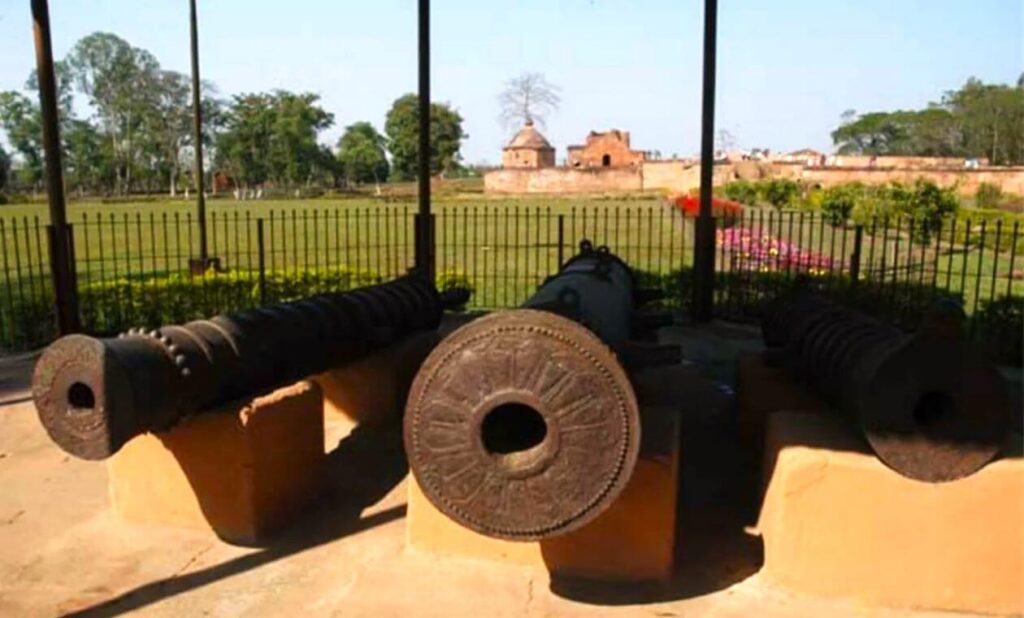
Among the most remarkable historical monuments in Assam, Talatal Ghar—also known as Kareng Ghar—stands as a true architectural marvel of the Ahom dynasty. It is the largest surviving Ahom monument in the world and a must-visit for history enthusiasts and architecture lovers alike. Built between 1751 AD and 1769 AD by Swargadeo Rajeswar Singha, this grand structure once served as the royal residence of the Ahom rulers.
What makes Talatal Ghar truly unique is its ingenious design. The monument has two secret tunnels and three underground floors, which were strategically used as emergency escape routes for the king and his army during times of war. Another fascinating feature is its construction technique—the building was made using organic materials such as bricks and a natural cement mixture of rice powder and duck eggs, showcasing the advanced craftsmanship of the Ahom era.
How to Reach Talatal Ghar
The nearest railway station is Sibsagar, located around 5 km away. From there, visitors can easily take a short rickshaw ride to reach Talatal Ghar. Local buses from Sibsagar Bus Stand are also available at budget-friendly fares, making it convenient for travellers.
Surya Pahar
Location: Bhatiapara, Assam
Timings: 10:00 AM – 5:00 PM (Closed on Fridays)
Entry Fee: Free
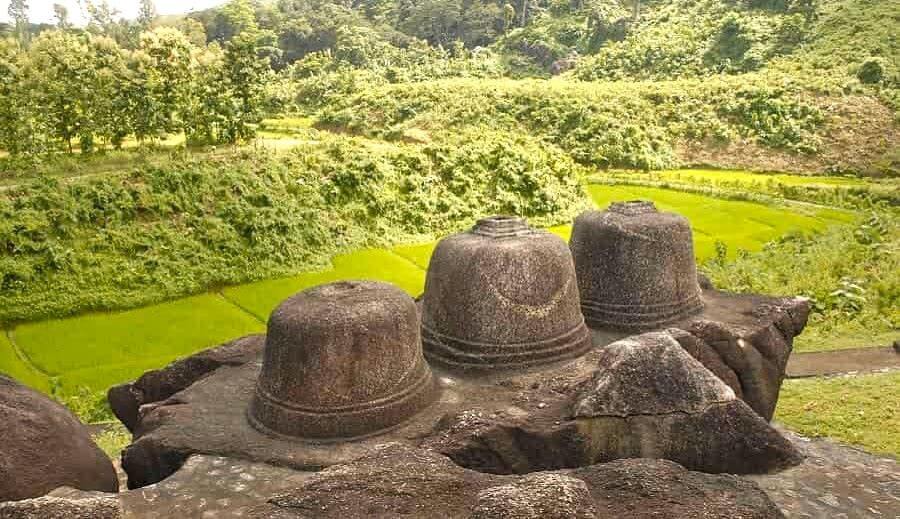
Often called an “archaeologist’s gold mine”, Surya Pahar is one of the most fascinating yet lesser-known historical sites in Assam. Situated about 12 km from Goalpara district, the name Surya Pahar translates to “Hill of the Sun,” linking it to the ancient practice of sun worship. This site is a treasure trove of artefacts and relics, offering deep insight into Assam’s religious and cultural past.
Surya Pahar is believed to be home to 99,999 Shiva Lingas, making it a place of immense significance for Hindu devotees. What makes it even more remarkable is that it also holds importance for Buddhists and Jains, reflecting Assam’s multi-religious heritage. Many of the excavated artefacts from the site are displayed in a nearby museum, giving visitors a closer look at its historical richness. With its blend of history, mythology, and spiritual charm, Surya Pahar remains one of Assam’s most intriguing heritage destinations.
How to Reach Surya Pahar
Surya Pahar is located about 127 km from Guwahati. Regular buses and taxis are available, making it an easily accessible day trip for travellers.
Khaspur
Location: Cachar District, Assam
Timings: Open all day
Entry Fee: Free
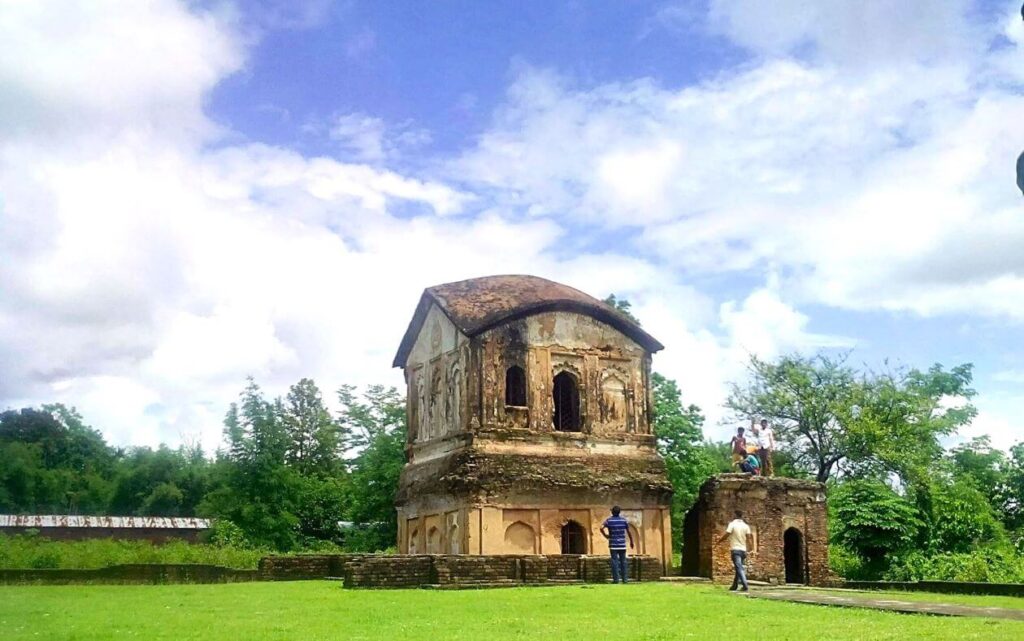
Once the flourishing capital of the Kachari kings during medieval times, Khaspur is today one of the most fascinating historical sites in Assam. Though much of it lies in ruins, the remains still speak volumes about the region’s rich cultural heritage and royal past. The highlight of Khaspur is the Kachari Fort, which served as the royal seat of the Dimasa Kachari rulers. Visitors can also see the Suryadwar (Gateway of the Sun) and Devalaya (House of the Gods), which showcase the architectural and spiritual legacy of the era.
Dating back to the 18th century, Khaspur came under the Dimasa Kachari rule after the Koch king passed away without an heir. The fort and other monuments built during this time reflect the power, artistry, and traditions of the dynasty. For history enthusiasts, a trip to Khaspur offers a rare glimpse into Assam’s glorious medieval past.
How to Reach Khaspur
Khaspur is located about 21 km from Silchar. Travellers can easily take a bus or hire a taxi, with the journey taking around 40–45 minutes.
Charaideo
Location: Charaideo District, Assam
Timings: Open all day
Entry Fee: Free
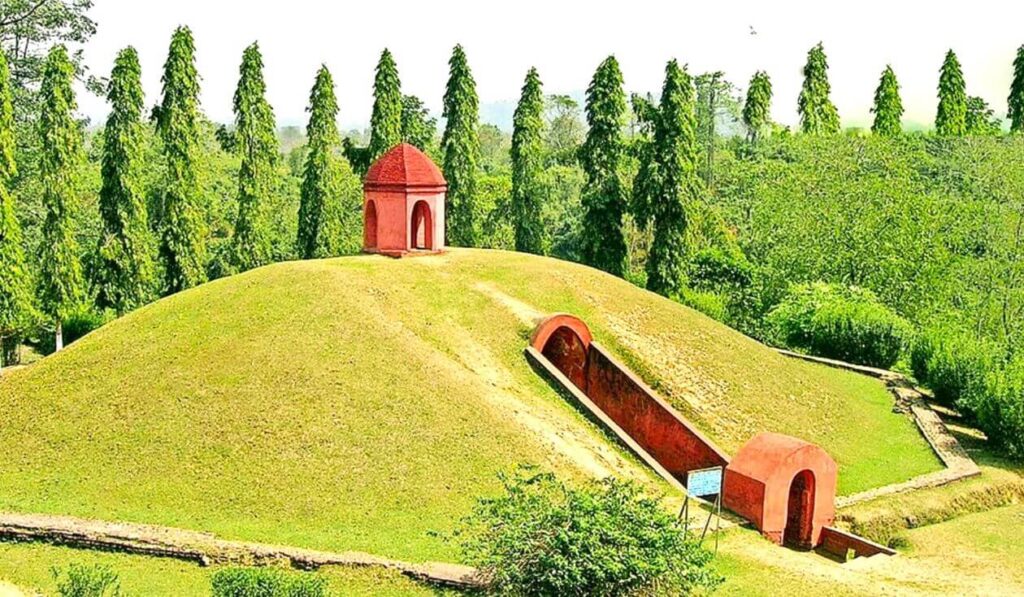
Founded by Sukapha, the first king and founder of the Ahom dynasty, Charaideo holds immense historical and cultural importance. Situated about 28 km from Sibsagar, this site is regarded as the first capital of the Ahoms. Today, it is best known as the burial ground of Ahom royalty, with 42 tombs of kings and queens located atop its hill. Constructed from stone and bricks, these tombs offer a fascinating glimpse into the grandeur and lifestyle of the Ahom rulers.
Charaideo is often referred to as the “Pyramids of Assam” because of its striking resemblance to the Egyptian pyramids. The intricate design and craftsmanship of these royal mausoleums are a true testament to the architectural brilliance of the medieval Ahom era. For history lovers and curious travellers, Charaideo stands as one of Assam’s most captivating heritage sites.
How to Reach Charaideo
Charaideo is around 30 minutes from Sibsagar by road. Visitors can easily reach the site by hiring a taxi or taking a local bus from Sibsagar.
Sukapha Samannay Kshetra
Location: Jorhat, Assam
Timings: 9:30 AM – 4:30 PM
Entry Fee: INR 10 (Adults), INR 5 (Children), INR 20 (Camera)
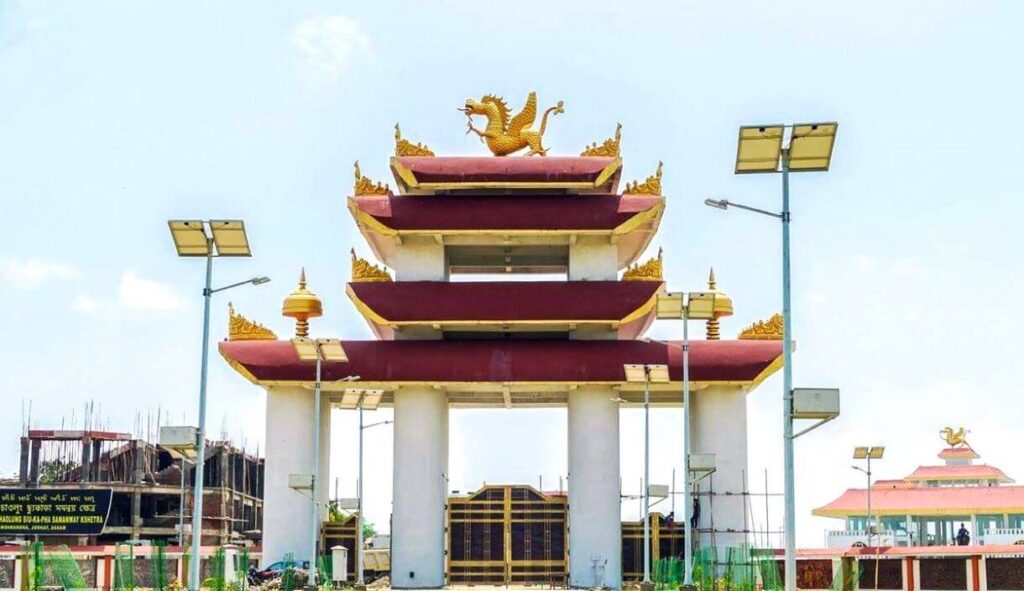
Built in honour of Sukapha (also known as Siu-Ka-Pha), the first Ahom king and founder of the Ahom dynasty, Sukapha Samannay Kshetra is one of the most important historical sites in Assam. The Ahom dynasty, established by Sukapha, ruled for nearly 600 years, shaping the political and cultural landscape of Assam. Located in Mohbandha near Jorhat and Derain, this heritage site commemorates the leadership and unifying vision of the great king.
Sukapha, originally a Thai prince, crossed the Patkai range and laid the foundation of the Ahom kingdom. He is remembered not only as a ruler but also as a leader who brought together the tribal and non-tribal communities of the region. The site stands as a tribute to his legacy, with ongoing excavations seeking to uncover more remains of the Ahom dynasty. For those keen to learn about Assam’s royal history, Sukapha Samannay Kshetra is a must-visit.
How to Reach Sukapha Samannay Kshetra
The site is located about 14 km from Jorhat. Visitors can take a taxi or board a local bus, reaching Sukapha Samannay Kshetra in roughly 30 minutes.
Kamakhya Temple
Location: Nilachal Hill, Guwahati, Assam
Timings: 5:30 am – 10:00 pm
Entry Fees: No entry fee is required
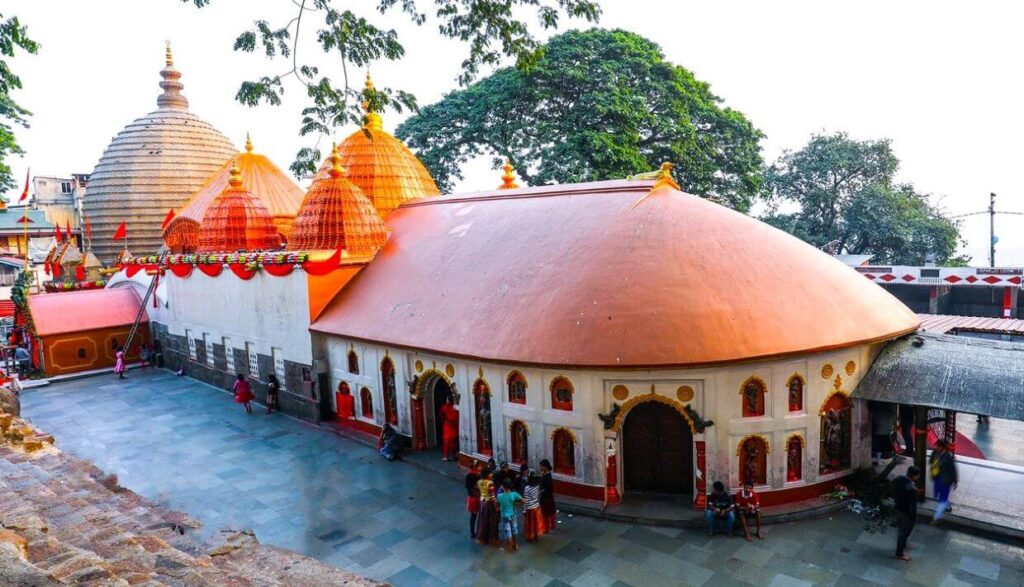
One of the most sacred Shakti Peethas in India, Kamakhya Temple is a must-visit historical and spiritual landmark in Assam. Dedicated to Goddess Kamakhya, this temple is perched atop Nilachal Hill in Guwahati and dates back to the 8th–9th century. Its distinctive architecture, featuring beehive-shaped domes and intricate carvings, reflects a blend of Hindu and Tantric traditions.
The temple is especially famous for the annual Ambubachi Mela, a grand celebration that attracts thousands of devotees from across the country. Besides being a place of worship, Kamakhya Temple offers panoramic views of the Brahmaputra River and Guwahati city, making it a cultural and architectural marvel of Assam.
How to reach Kamakhya Temple
Kamakhya Temple is about 8 km from Guwahati Railway Station. You can easily reach it by taxi, cab, or local bus in around 20–30 minutes.
Satras
Location: Majuli, Assam
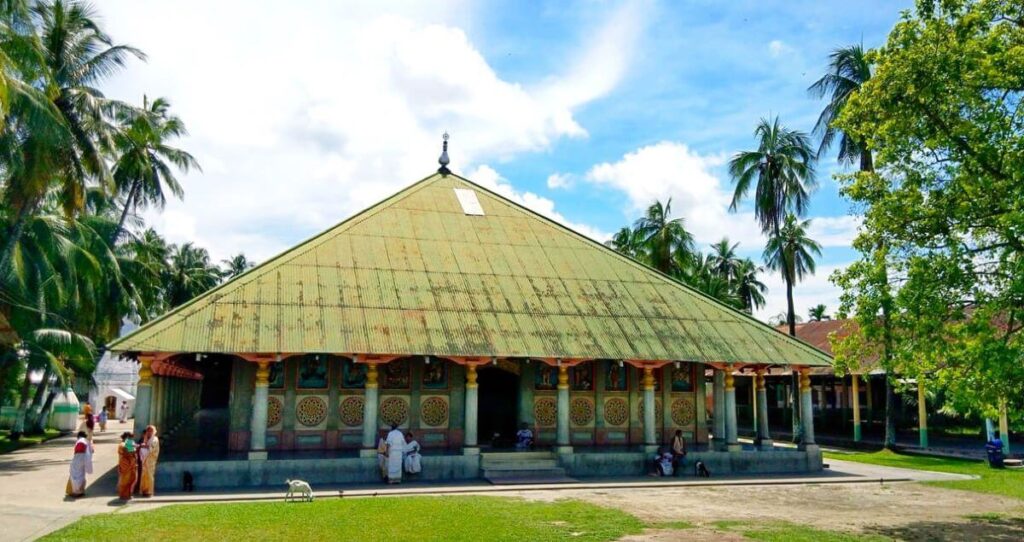
The Satras of Majuli are unique cultural and religious institutions that date back to the 16th century. Situated on Majuli, the world’s largest inhabited river island, these Satras are deeply associated with the Ekasarana tradition of Vaishnavism founded by the great saint and reformer Srimanta Sankardeva, often regarded as the father of Assamese culture.
More than just monasteries, Satras serve as vibrant centres for prayer, learning, and the preservation of Assamese art, dance, music, and drama. Traditionally, they comprise large prayer halls facing a shrine, along with bathing tanks and dormitories for monks. The first Satra was established in the 15th century, and at one time Majuli had as many as 65 Satras. Today, around 22 remain, as many have been lost to floods and erosion. Among the most famous are Auni-ati, Kamalabari, Dakhinpat, Garamur, Samaguri, Bengena-ati, and Natun Kamalabari.
For travellers, a visit to the Satras offers an authentic glimpse into Assamese spirituality and cultural heritage, making Majuli one of the most historically and culturally rich destinations in Assam.
How to Reach Majuli
Majuli is accessible only by ferry. The nearest airport is Jorhat Airport, located about 45 km away. From there, you can hire a taxi or take a bus to reach Nimati Ghat, which takes around 2 hours. Regular ferries from Nimati Ghat carry passengers across the Brahmaputra River to Majuli.
Travel Tips for Exploring Historical Places in Assam
- Plan your base smartly: Choose your stay location based on proximity—Guwahati for Hajo, Jorhat for Majuli and Sukapha Samannay Kshetra, and Sivasagar for Rang Ghar, Talatal Ghar, and Charaideo.
- Check monument timings: Most heritage sites are open from 9:00 AM to 5:00 PM. Visiting early in the morning ensures fewer crowds and a more peaceful experience.
- Travel light but prepared: Carry valid ID proofs, a water bottle, hats or caps, sunscreen, and comfortable walking shoes, as some sites involve short treks, stair climbs, or open grounds.
- Hire local guides: At monuments like Talatal Ghar and the Satras of Majuli, local guides can enrich your visit with fascinating stories, cultural details, and hidden facts.
- Mind the weather: The best time for heritage tours in Assam is from November to April, when the weather is pleasant, dry, and ideal for sightseeing and cultural exploration.
Conclusion
Assam is not just about tea gardens, wildlife sanctuaries, and scenic landscapes—it is also a land steeped in history, culture, and spirituality. From the majestic Rang Ghar and Talatal Ghar that showcase Ahom architectural brilliance, to the sacred Satras of Majuli and Hajo Powa Mecca, each site tells a unique story of Assam’s glorious past. Whether it’s the royal tombs of Charaideo, the spiritual aura of Surya Pahar, or the cultural legacy preserved at Sukapha Samannay Kshetra, these monuments are windows into Assam’s rich heritage.
For history buffs, architecture lovers, and curious travellers alike, exploring these sites is an unforgettable journey through centuries of tradition, artistry, and devotion. So, when you plan your trip to Northeast India, make sure to add these historical places in Assam to your itinerary and experience the timeless charm of this culturally vibrant state.
FAQs About Historical Places in Assam
Kamakhya Temple in Guwahati is one of the most famous and revered historical places in Assam, attracting pilgrims and tourists alike.
The Satras of Majuli and Surya Pahar date back to the 15th–16th century, while Charaideo, built by Sukapha, is considered one of the earliest Ahom-era capitals.
Assam is widely known for its tea gardens, Kaziranga National Park, one-horned rhinoceros, silk weaving (Muga & Eri silk), and its vibrant festivals like Bihu.
The ideal time is between November and April, when the weather is cool, dry, and comfortable for sightseeing.
Majuli once had 65 Satras, but due to erosion and floods, only around 22 Satras remain today. Some of the most famous ones are Auni-ati, Kamalabari, Dakhinpat, Garamur, and Samaguri.
While entry is free at many sites, hiring a local guide is highly recommended at places like Talatal Ghar, Charaideo, and the Satras, as they provide detailed historical insights and hidden stories.
Guwahati – for Hajo and Kamakhya Temple
Jorhat – for Majuli and Sukapha Samannay Kshetra
Sivasagar – for Rang Ghar, Talatal Ghar, and Charaideo
In a 5-day trip, you can cover major attractions like Kamakhya Temple (Guwahati), Majuli Satras, Rang Ghar, Talatal Ghar, and Charaideo, along with exploring local culture and cuisine.

